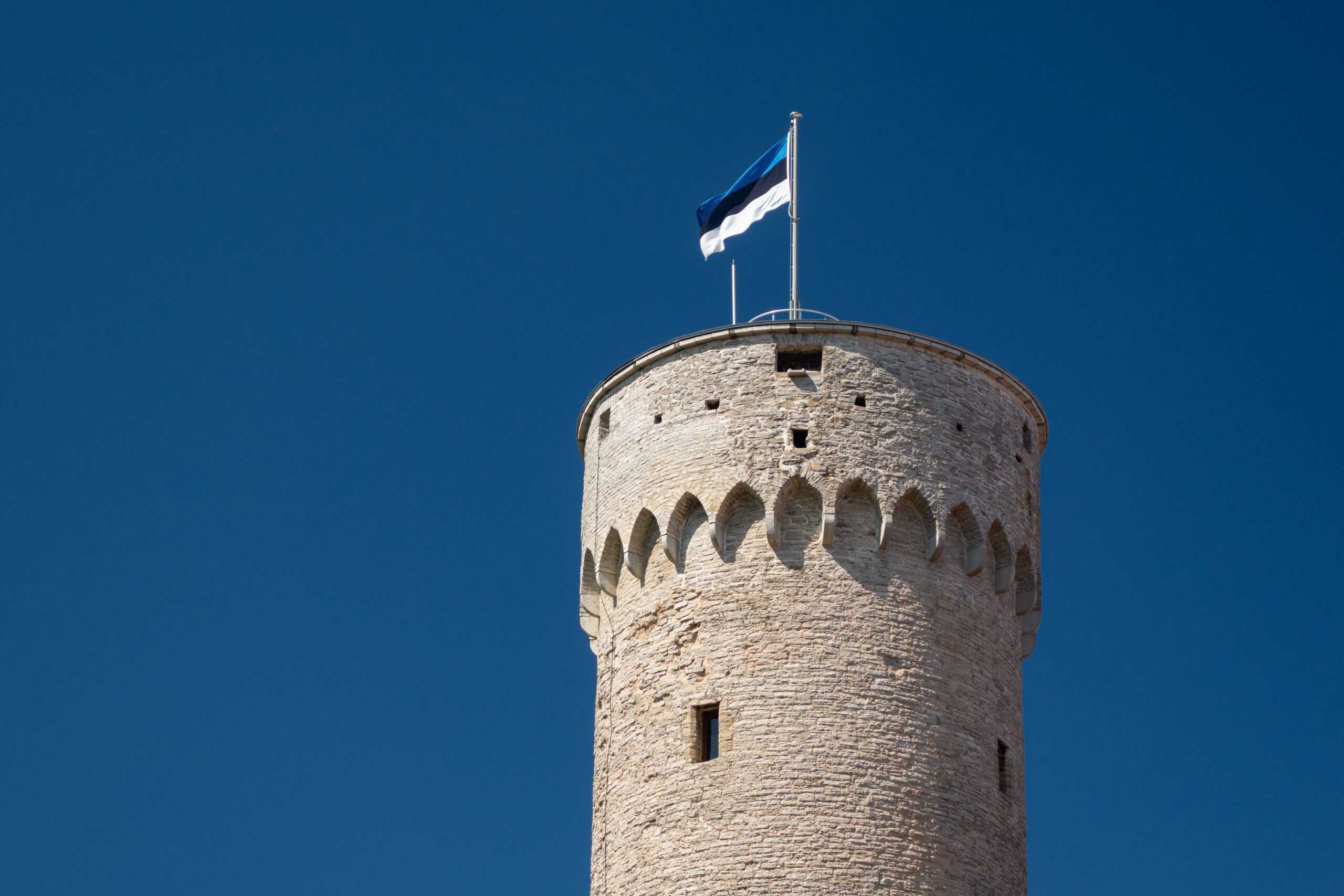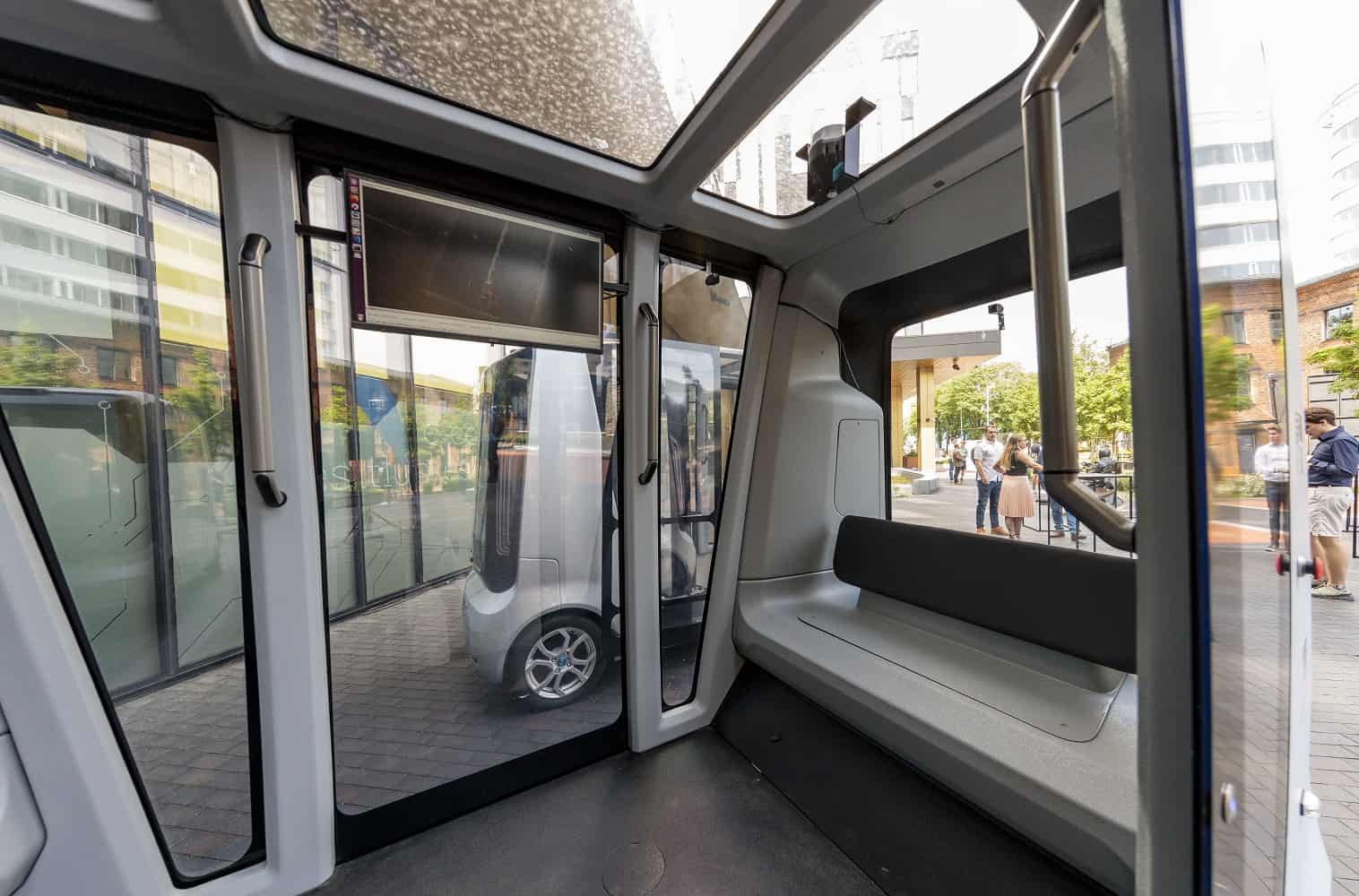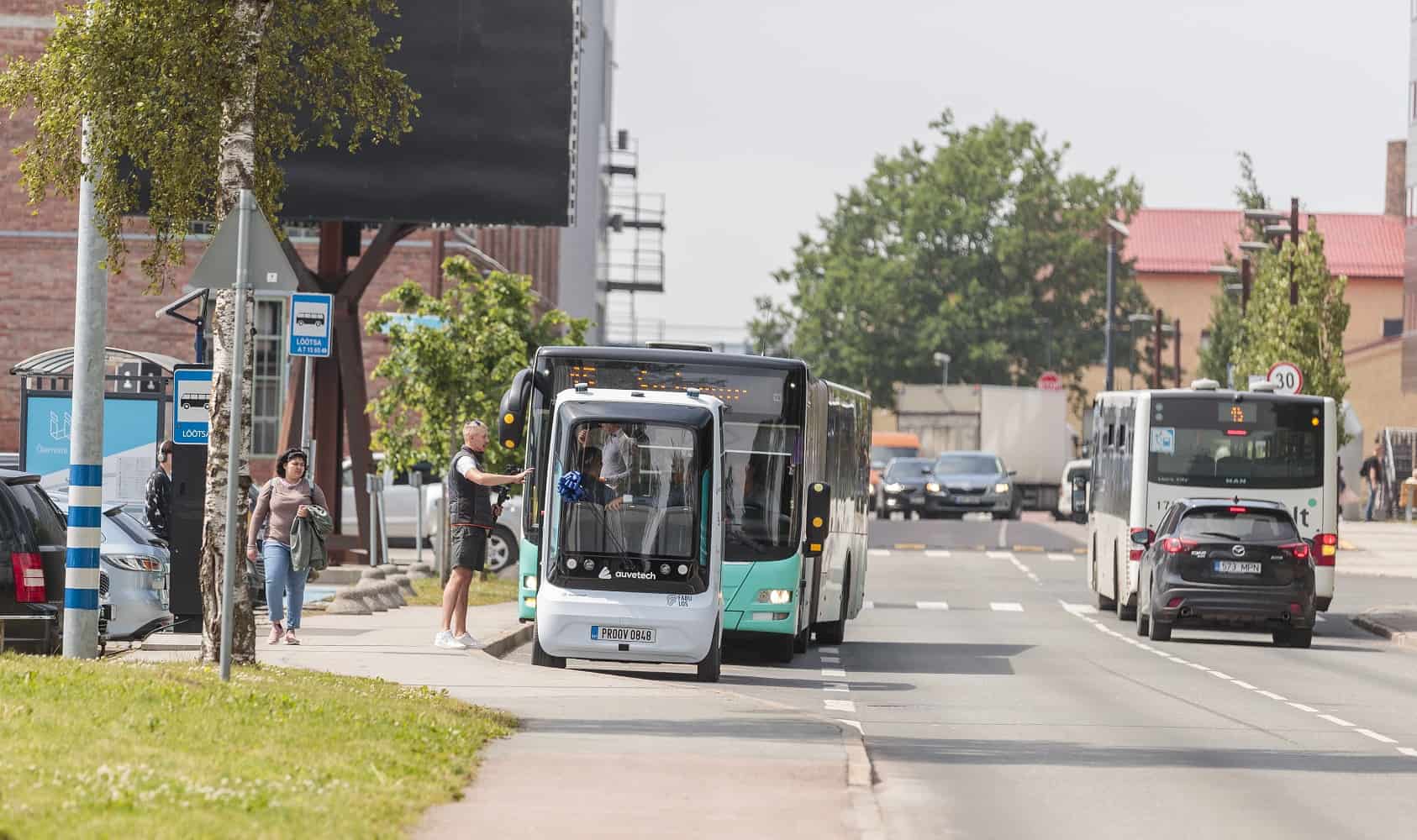It goes without saying that a nation’s capital is almost always the best representation of its heart. So, it comes as no surprise that Estonia’s capital, Tallinn, is a renown smart city. The term ‘smart city’ may seem a bit of a challenge, and not because it is supposedly controversial: the number of techniques and actions aimed at making a city smarter is innumerable, and each urban region trying to achieve this goal has its own ways.
Accessibility, interoperability, and user-friendliness are the pillars of Tallinn’s smart city journey. In this respect, the city’s administration has managed to synchronise its urban and digital growth with the progress of the nation’s digital society. Together, Estonia and its capital provide efficient and convenient digital services to its citizens, tourists and businesses, especially by using common infrastructures for data exchange and avoiding redundancies by integrating data, such as the authentication mechanisms of the national e-ID system.
Talking about its vision of the future city, Hannes Astok, Estonian smart city expert and Executive Director of the e-governance academy said: “Using and understating data is the key to the future. City organisation is going to change, or cities will start linking up with others. Tomorrow’s leaders will be those who can understand and decipher these changes. Next is renewable energy. We’re planning to spend a lot more time looking not at how to store energy, but how to use and reuse it intelligently, for example within a closed-circuit. And last, I’d say it’s the ability to predict. Predicting needs through artificial intelligence. It won’t be Big Brother or Minority Report, instead, analysis will be based on predictable patterns that will help simplify people’s daily lives, and anticipate their needs and issues.”[1]
A smart city preceded by its reputation
In October 2020, when Tallinn, Estonia was voted Intelligent Community of the Year by the Intelligent Community Forum (ICF), a dedication to environmental sustainability was a consideration in its nomination.[2]
“Tallinn scored high in our analysis for many reasons including sustainability,” said ICF co-founder Robert Bell.[3] He also added: “The city ranks as one of the five countries with the cleanest air in the world. Known for the abundance of trees in an urban space, it has been protecting its green environment since the 13th Century and has developed multiple sustainability strategies that aim to protect the city from overdevelopment and achieve zero-emission transport by 2025.”
In May of same year, the European Commission selected the Estonian Capital as one of four contenders for the European Green Capital Award. Following these accomplishments, the city launched a new identity as a Green Global City. Finally, in 2023 Tallin officially begun its EU Green Capital year, celebrating the “handover” on January the 21.[4]
The EU acknowledges that cities play a vital role in fulfilling the goals of the European Green Deal,[5] which are to create a low-carbon, resource-efficient, sustainable, and resilient society. Cities have a significant role in the environmental and economic transition, as more than 75 percent of Europeans live in metropolitan areas.[6]
The European Commission initiated the European Green Capital Award in 2010 to encourage cities to become greener and cleaner and to enhance the quality of life for their residents. With over two-thirds of Europe’s population residing in urban areas, cities play a major role in environmental preservation and will be crucial in implementing the European Green Deal at the local level. Up to this point, fourteen cities have received the European Green Capital Award: Stockholm (2010), Hamburg (2011), Vitoria-Gasteiz (2012), Nantes (2013), Copenhagen (2014), Bristol (2015), Ljubljana (2016), Essen (2017), Nijmegen (2018), Oslo (2019), Lisbon (2020), Lahti (2021), Grenoble (2022), and Tallinn (2023); Valencia will receive the award in 2024.[7]
Tallinn has been named a champion of sustainability and innovation for its comprehensive approach to green governance and interlinked strategic goals, which are in line with the objectives of the European Green Deal. Tallinn, one of Europe’s best-preserved medieval cities and a UNESCO World Heritage Site, is also characterised by its mosaic-like landscapes, which are home to rare species. During the Green Capital Year, Tallinn will focus on biodiversity, sustainable governance and climate and green innovation.[8] Tallinn’s European Green Capital project includes environmental activities for the city’s residents and tourists, such as defining sustainability goals with other European cities.
The city has adopted the ambitious development strategy “Tallinn 2035”.[9] The plan covers carbon neutrality, climate change adaptation, innovation, health, mobility, biodiversity, circular economy, sustainable energy and food production. To increase biodiversity, the city is creating GoGreenRoutes,[10] where residents can work together to create nature-based solutions and urban gardening. Additionally, the construction of a 13-kilometre pollinator route, a meadow for nature to flourish in the city, is now underway.
Tallinn is also committed to climate adaptation and resilience. Numerous measures are in place, such as rainwater management systems and road reconstruction, and additional activities are planned, such as Green Twins, a project to better integrate urban vegetation into urban design.
Tallin ranked in the IMD Smart City Index report
In the annual 2023 IMD Smart City index report[11] redacted by the Smart City Observatory of the International Institute for Management Development (IMD), Tallin ranked 32nd among 140 cities analysed by the team of experts. This shows a slight decrease in the ranking from 2021’s 24th position, but still a higher evaluation than 2020, when the city was assigned the 39th rank.
IMD has established a Smart City Index with a balanced emphasis on economic and technological components of smart cities on the one hand, and “humane features” of smart cities such as quality of life, environment, and inclusion on the other. Hence, the ranking gives a valuable insight to the level of satisfaction of citizens through tailored questionnaires and public surveys.
In the case of Tallin, for instance, three of the main urgent needs perceived by citizens are related to: 1) Affordable housing (60.9% of respondents), 2) Corruption (47.7% of respondents), and 3) Road congestion (40.8% of respondents).
The main issue of affordable housing can’t be directly addressed with the implementation of smart technologies and would need a more holistic approach in policymaking. However, as can be seen in the IMD report, citizens value comprehensively well opportunities (World & School) offered in Tallin both in terms of structure and technology. Particularly, “Employment finding services” and “Online access to job listings” were taken into great consideration by the public. This can contribute overall to a higher income and, hence, partially to a higher capacity to purchase a house.
As for corruption, which is another highly perceived issue in the city, “Online public access to city finances” seems to have not reduced the problem. Additionally, citizens do not feel integrated in the decision-making process. However, it is to be noted that “Information on local government decisions” are considered easily accessible and that “Online voting has increased participation.” Estonia’s capital city should definitely work on improving transparency and public accountability; this can be achieved through wider open data policies, disclosure of information and new monitoring bodies.
In terms of mobility Tallinn is struggling to reduce traffic congestion and improve mobility. It is the first European capital to offer free public transport to its citizens (since 2013)[12] and its goal for urban mobility is that citizens should be able to reach all necessary infrastructure within 15 min via soft transport modes. To travel on Tallinn’s buses, trams, trolley buses, and trains without any cost, one must register as a resident. In turn, the municipality receives €1,000 from the individual’s annual income tax. The residents have to merely pay €2 for a green card,[13] following which all sorts of travel are without charge.
Mobility and automation
Tallinn has developed a number of excellent smart city initiatives. In particular, its urban planning makes use of several cutting-edge geo-information technologies. The planning process incorporates better mapping applications, internet databases and analytical capabilities. In addition, BIM (Building Information Management) and VDC (Virtual Design and Creation) are being used in the construction of the city.
TalTech Institute of Software Science and OÜ Thinnect have developed a system for monitoring urban air quality and traffic flow. The 900 solar panel sensors and batteries mounted on Tallinn’s street lights will collect and analyse data on environmental conditions and traffic movements. This revolutionary solution can prevent traffic congestion and noise pollution, resulting in a more attractive cityscape. In terms of mobility automation, since 2019 Tallin offers a unique means of transport. Thanks to the partnership between Estonian TalTech and Florida Polytechnic University for the research of autonomous vehicles, Tallin was able to deploy self-driving buses.[14]
Lumebot (=Snowbot, lumi means snow in Estonian) is a snow removal, street cleaning and street sweeping robot developed together with entrepreneurs. In addition, self-driving electric minibuses have been tested in neighbourhoods for several years. Their use is planned either as part of the public transport system or in car-free zones such as hospitals, parks and zoos. Given Tallinn’s coastal location, Iselaev is an autonomous delivery or transport vehicle, analogous to self-driving buses. It is designed to carry smaller, on-demand loads and could be useful for transporting waste from the capital’s neighbouring islands.
Digital City Council meetings
Clearly, the global health crisis revealed unforeseen needs in local government. The development of the digital technology required for the electronic organisation of Tallinn City Council meetings was an example of such a need. As the highest political body of the city, it was clear from the beginning of the emergency that the Council could not suspend its activities due to its unique power over various urgent issues. Whether it was a temporary exemption for the location of a nursery or an emergency travel privilege for non-residents, the local administration proposed a variety of solutions to the situation. The lack of appropriate technological solutions made it difficult to start electronic meetings immediately. This was not the first time such meetings had been needed. Initially, it was unclear whether electronic meetings were allowed.
To minimise the spread of the virus, the Council’s political groups decided at the end of March that initially only one representative from each group would attend the meetings. A month later, an electronic voting system was introduced, allowing council meetings to be held by computer if necessary. Councillors who log on to the platform with a card or mobile ID can register their intention to speak on agenda items, vote securely and confirm the correctness of their vote.
References
- https://www.mobilize.com/en/wearemobilizers/tallinn-an-example-of-smart-city-technology-use/ ↑
- https://www.intelligentcommunity.org/tallinn_estonia_named_2020_intelligent_community_of_the_year ↑
- https://www.intelligentcommunity.org/tallinn_estonia_icf_s_intelligent_community_of_the_year_launches_green_global_city_initiative ↑
- https://environment.ec.europa.eu/news/eu-green-capital-year-tallinn-has-officially-begun-2023-02-06_en ↑
- https://commission.europa.eu/strategy-and-policy/priorities-2019-2024/european-green-deal_en ↑
- https://www.macrotrends.net/countries/EUU/european-union/urban-population ↑
- https://environment.ec.europa.eu/news/tallinn-starts-2023-european-green-capital-2023-01-20_en ↑
- https://greentallinn.eu/en/ ↑
- https://strateegia.tallinn.ee/en ↑
- https://gogreenroutes.eu/cities/tallinn ↑
- https://www.imd.org/wp-content/uploads/2023/04/smartcityindex-2023-v7.pdf ↑
- https://www.theguardian.com/cities/2016/oct/11/tallinn-experiment-estonia-public-transport-free-cities ↑
- https://www.tallinn.ee/en/freepublictransport ↑
- https://e-estonia.com/driverless-public-bus-tallinn/ ↑







